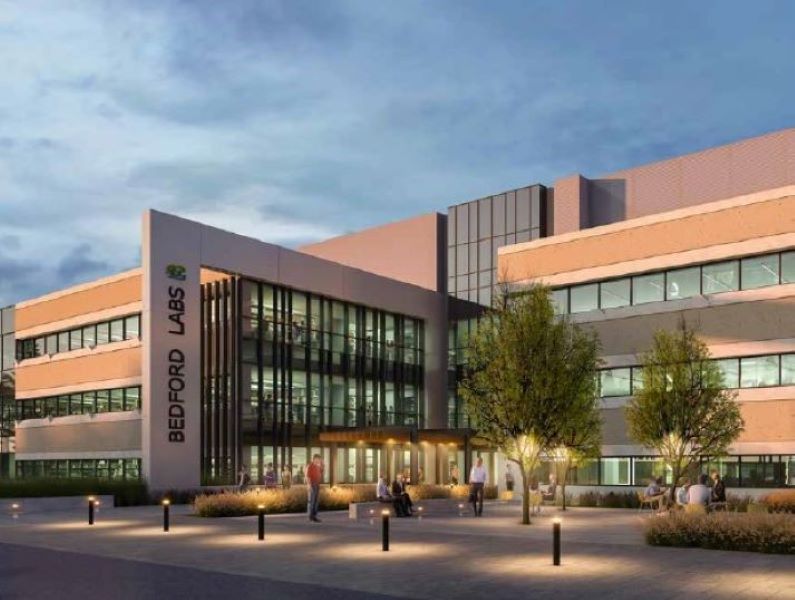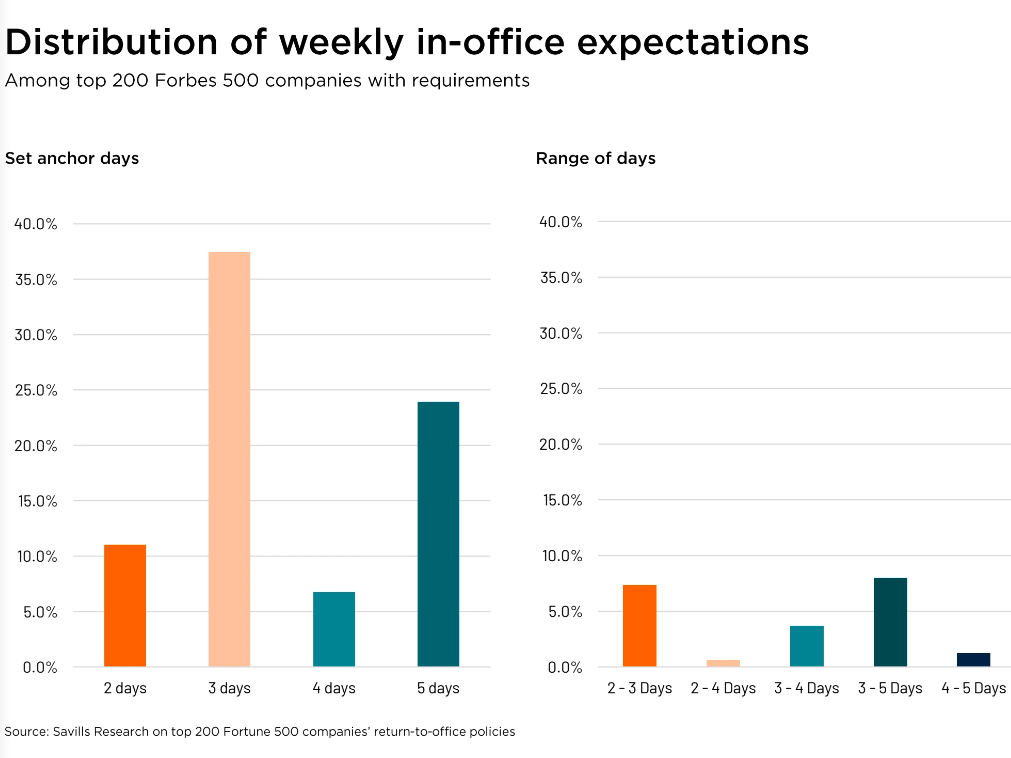AEW Capital JV Lands $150M Refi for Life Science Building
An Apollo Global Management affiliate provided the loan for the suburban Boston asset.
AEW Capital Management, Redgate and Optimum Asset Management have secured a $150 million refinancing for Bedford Labs, a 288,000-square-foot, newly converted Class A life science facility in Bedford, Mass.

JLL Capital Markets secured the loan from an Apollo Global Management affiliate on behalf of the joint venture. Senior Managing Directors Brett Paulsrud and Tom Sullivan and Director Mike Shepard led the team representing the borrower.
According to JLL’s 2024 life science properties report, the cycle of softening lab demand has moderated, and U.S. demand has increased since the fall of 2023, up 6.3 percent across the board in the first quarter of 2024. Most of this uptick in demand is concentrated in the top three markets, including Greater Boston.
Bedford Labs was recently repositioned from a single-tenant office building into a life science/R&D facility. Bedford Labs is fully leased to Sarepta Therapeutics, a commercial-stage biopharmaceutical company focusing on rare genetic diseases.
READ ALSO: Designing Tomorrow’s Labs
The site allows for an additional 300,000 square feet of development in addition to the existing building, which can accommodate the further expansion needs of Sarepta and/or other market tenants.
Bedford Labs’ 52 acres are at 100 Crosby Drive, an area attracting others from the sector.
In late May, Persimmon Technologies, a subsidiary of Sumitomo Heavy Industries, signed a 142,224-square-foot, long-term lease with W. P. Carey in Bedford, Mass. Newmark represented the owner, while Colliers negotiated on behalf of the tenant.
The tech firm will relocate its headquarters to 35 Crosby Drive, a flex office property currently being redeveloped into an R&D facility. Revamp completion is expected in late 2025.
Venture capital funding set to outpace last year’s total
Bob Dougherty, principal at Luminous Capital Management, told Commercial Property Executive he had observed a modest increase in lab demand during the third quarter, particularly among users seeking 10,000 square feet or less.
According to Pitchbook, nationwide venture capital funding for life sciences was $23 billion through June, putting 2024 on pace to far exceed the 2023 total of $29 billion.
“Space absorption is closely correlated to investment activity, so this likely accounts for the increased demand,” Dougherty said. “Additionally, the lag effect between funding commitments and tenant growth may bode well for the future.” Nonetheless, optimism should be tempered, Dougherty cautions, adding that while improved leasing activity is a welcome change, occupants take a “do more with less” approach to space utilization.
“In a tenant-friendly environment, users don’t feel the need to control future expansion space as they did in a supply-constrained market in 2022-21,” Dougherty said. “They are taking only what they need now and are assuming more space will be available if they need it down the road—and they have far less sanguine growth assumptions.
According to Dougherty, additions to supply in the Big Three life science markets surpass even improved demand levels. “Landlords, particularly those with large blocks of space on offer, will likely face tough sledding well into 2026,” he added.
Demand up for lab space, executive talent
Ken Richter, National Life Science Sector lead at Project Management Advisors, told CPE he is seeing a growing, albeit slow, demand for lab space in the major life science markets.
“We know a few significant pharma-based requirements in the larger West Coast markets that are helping to drive this,” Richter said. “This is a welcome sign and hopefully a harbinger of a return to a broader demand for lab space. Finally, with no new speculative builds starting in the past year or so, we should pass a peak of availability once the current product under construction is delivered.”
The current talent landscape clearly reflects the corporate and commercial real estate market shifts, according to Lisa Flicker, senior managing partner & head of Real Estate for Jackson Lucas.
She told CPE that there is a strong demand for leadership roles in emerging niche asset classes, while executive positions in the life science and biotech sectors have notably lagged.
“Today’s market calls for executive candidates with broad expertise across specialized markets. Sectors like outdoor storage, data centers and senior housing are particularly ripe for new opportunities and growth in their C-suite. As these asset classes evolve into more sophisticated markets, they increasingly require top-tier management to drive their continued success,” Flicker said.
Bullish on Boston’s core markets
Mark Barer, director of Development at Lendlease, which, along with Ivanhoé Cambridge, is nearing completion on FORUM, a nine-story, 350,000-square-foot life science development at 60 Guest St. in Boston’s Allston-Brighton neighborhood, told CPE his firm remains bullish on the long-term demand for life science real estate, particularly in core markets like Boston, which continues to lead the nation in leasing activity.
“Right now, developers need to be creative and collaborative in finding solutions for tenants in today’s marketplace,” Barer said.
Daniel Maldonado, managing director, Life Sciences, Americas at Unispace, told CPE that with life science venture capital activity starting to ramp up, it makes sense that top life science market clusters are starting to see demand pick up, which should steadily progress toward rightsizing the oversupply of life science real estate.
“As the market continues toward stabilization, some owners and landlords have gotten creative with their approaches to leasing and occupancy,” Maldonado said. “While some life science property landlords lease out small amounts of space to traditional office users in newly built, vacant life science projects, others have been diversifying their real estate portfolios and leveraging flexible design in their life science properties that can be adapted for different uses, including office environments.”
According to Maldonado, adaptable spaces catering to life science and office tenants allow landlords and property owners to be nimbler in response to market changes and demands. He added that life science buildings with flexible layouts that accommodate different tenants are easier to lease to office users temporarily, leading to increased financial stability.
“As financing conditions improve, the gap between available life science space and demand for it should begin to close, leading to a shift away from interim leasing strategies and a return to a focus on life science tenants. Lower borrowing costs will likely spur increased investment in life science projects, potentially revitalizing demand for lab spaces and reducing the need for landlords to rely on office tenants.”
San Diego saw a shift from office to life science
Moving to the West Coast, San Diego remains one of the top three markets nationwide for life science development and activity, Sean Slater, senior principal, RDC, told CPE.
“In this key market, the COVID-19 shutdown affected Class A offices and other categories of office that were swiftly pivoted and converted to other uses like life science,” Slater said.
“Creative office,” the name given to large, uninterrupted floor space for creative industries, was devastated by the work-from-home movement, particularly in the tech and media industries, he said.
“Office space designed for creatives was modified to work for life science/biotech uses at Horton Plaza and several other properties nationally,” according to Slater.
He added that this move resulted in a glut of space in a market that had been somewhat starved for new lab space. “The San Diego life science/biotech industry has traditionally centered on a few submarkets like Sorrento Valley and La Jolla Mesa near the University of California San Diego, one of the nation’s preeminent research universities,” he said.
According to Slater, the theory behind this location approach was that biotech could be located in urbanized areas like downtown San Diego due to the growth in high-density residential that cater to a higher-income, younger demographic more likely to work in biotech fields.
Slater said this has not played out as expected in downtown San Diego.
“Much of the life science market here comprises start-ups and small, innovative firms looking to patent technologies and sell to larger Big Pharma companies. These types of companies do not require and cannot afford prime space on public transit in our city center, thus depressing the demand for life science space in the downtown core,” Slater said.
He believes that the “build-it-and-they-will-come” approach may emerge as prescient, however, in the future. “As absorption continues to squeeze the traditional biotech submarkets, firms looking for prime space may start to look more seriously at downtown space like Horton and the RaDD district, which have also recently been completed,” Slater added.







You must be logged in to post a comment.